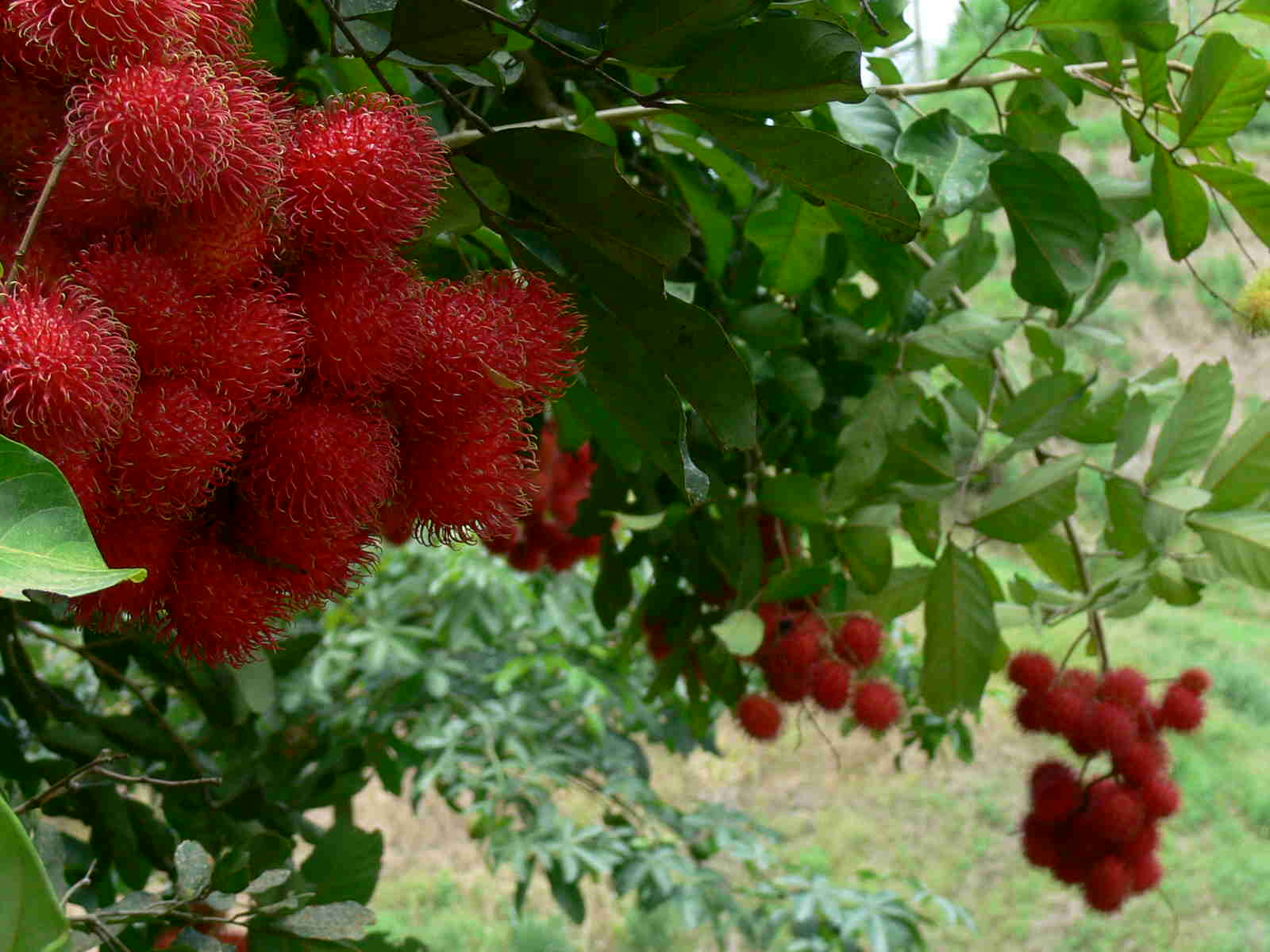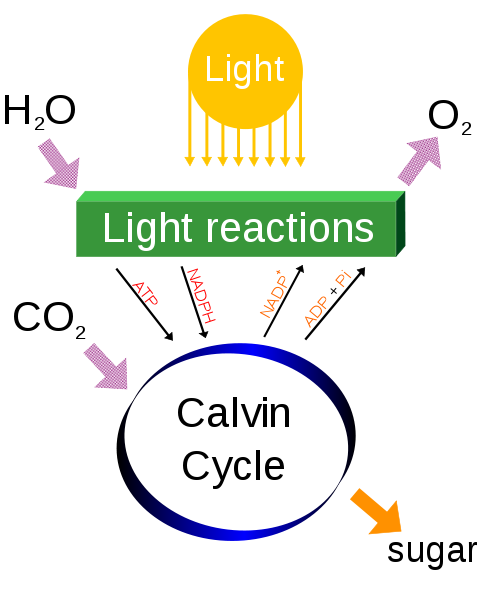
How Does It Get Nutrients?
The rambutan is an autotrophic plant that
gets its nutrients from the soil and the sun. Soil provides a
plethora of nutrients such as nitrogen, phosphorus, potassium,
and many more. To learn more about the more types of nutrients
found in soil
click here.
The sun provides the tree with the appropriate
source of light to undergo photosynthesis. Photosynthesis is a
process where light energy is converted into nutritious sugars the
plant will use or store for later use. This process is found in the
chloroplasts, which are located in the leaves, as mentioned on the
Adaptations page.

To break down the process of photosynthesis, one should understand
that it is a two-step process, a light reaction followed by a dark
reaction. In the light reaction, sunlight, water, and carbon dioxide
are taken in and converted into two energy rich chemicals called ATP
(adenosine triphosphate) and NADPH. These two chemicals and the
carbon dioxide are then used in the dark reaction in photosynthesis,
also known as the Calvin Cycle. The Calvin Cycle takes ATP, NADPH,
and carbon dioxide and makes sugar, otherwise known as glucose.
Glucose is then stored or used to feed the rest of the plant.
Click here to continue on to
Reproduction.